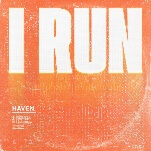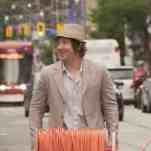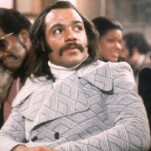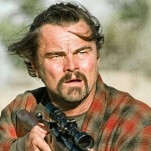Being Human (U.K.): "Episode One"

The second season is often the crucial one for genre-steeped TV shows, since that’s where the writers and actors figure out whether they can develop a cool premise into a sustainable universe, rich with stories to tell. The first season of Being Human introduced three compelling characters: a rakish vampire named John Mitchell (played by Aidan Turner), a nebbishy werewolf named George Sands (played by Russell Tovey), and a lovelorn ghost named Annie Sayer (played by Lenora Crichlow). Over the course of the first six episodes, Mitchell, George and Annie shared a house in Bristol and tried to help each other tame their worst monstrous instincts, all while confronting the ones responsible for their respective conditions. The first season ends with the heroes squaring off against the last of their nemeses—William Herrick, the powerful vampire who sired Mitchell back in World War I—and defeating him.
So where does Being Human creator Toby Whithouse take this trio from here? Well, as Season Two opens, George’s girlfriend Nina has moved into the house, though it’s not the non-stop sex-romp that George had been imagining. The main reason? Because in the Season One finale, Nina witnessed George’s werewolf transformation firsthand, and he scratched her. Now she’s nervous that she’s about to turn herself, at the next full moon—which is only days away. Annie, who can now be seen and (sort of) felt by people other than her roommates, is applying for a position at the local pub The New Found Out, even though she’s never held a job in her life. (“But I have watched The Apprentice,” she notes.) And Mitchell, well, by George’s assessment, he lacks purpose. With no girlfriend, a normalized moral center, and no Herrick to fight, he’s “like a piece of deadly furniture.”
Luckily—for the viewers at least—complications arise. Mitchell meets a pretty doctor named Lucy when he’s mopping out the unisex loo, and he tries to help her get over her disappointment with the move to Bristol, where the male doctors refer to unattractive patients with the acronym IWEJIHF (meaning “I Wouldn’t Even Jizz In Her Face”). Annie, meanwhile, strikes up a flirtation with her very first customer, a jittery, handsome fellow who pops pills on the sly and just generally seems like bad news. And George, in addition to his anxiety over Nina, is dealing with a flirtatious Scottish vampire named Daisy (magnificently played by Amy Manson).
But more about Daisy in a minute, because most of the above seem like minor subplots for the new season in comparison to the major trouble that arrives, literally, on our heroes’ doorstep. At the tail end of the first season—almost as an epilogue—viewers were introduced to a mysterious man who appeared to be monitoring Mitchell, George and Annie. At the end of the first episode of Season Two, the man has our heroes’ neighborhood evacuated via a fake gas-leak, so that he can sneak a psychic into the house and learn more about what goes on there. We also, in one horrifying scene earlier in the episode, see the mysterious man and a team of scientists stick a werewolf into a hyperbaric chamber during a full moon, and watch him bleed out.
I enjoyed the first season of Being Human despite a few qualms. I had problems with some of the shaky acting early on, and I felt like the show veered too often into the hyper-dramatic. I have some similar qualms about the first episode of Season Two. The acting is much-improved (especially by Tovey), but Crichlow’s Annie can still be pretty insufferable when she’s in one of her giddy, giggly moods. And for a show with so many funny lines—see some of my favorites below in the Stray Observations—Being Human is often more maudlin and mopey than it needs to be. Buffy and Angel, the two shows Whithouse is clearly trying to ape here, were far better at balancing humor, action, and pathos.
Whithouse acknowledges his Whedonverse debt directly in this episode when he has Annie note to Nina that there was a werewolf named Nina on Buffy. (If there is, I haven’t gotten that far in the series yet.) But for obvious reasons he doesn’t note the similarities between the team of scientists trapping and studying creatures in this episode and The Initiative, who did the same in Buffy’s fourth season. I can only hope that the paths of the two storylines diverge from this point. (Not that I have anything against The Initiative, mind you… I actually thought that was a promising storyline that Whedon and company squandered.)
For now though, I’m more interested in Daisy and her fellow-traveler Ivan, who provide this episode’s best moments. They show up early on, taunting George as vampires always do, although they later confess to Mitchell that they were only pestering George out of habit and obligation. Really, they’re in Bristol to witness the havoc in the vampire community in the wake of Herrick’s demise. Ivan considers himself a chaos-tourist, having marked time before in Baghdad and Phnom Penh. And Daisy always comes along for the ride, won over by Ivan’s slogan, “Come see the world and fuck.”








































